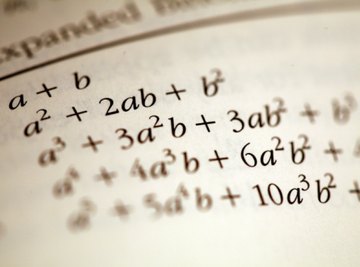
Since the times of the ancient Greeks, mathematicians have found laws and rules that apply to the use of numbers. With respect to multiplication, they have identified four basic properties that always hold true. Some of these may seem fairly obvious, but it makes sense for students of math to commit all four to memory, since they can be very helpful in solving problems and simplifying mathematical expressions.
Commutative
The commutative property for multiplication states that when you multiply two or more numbers together, the order in which you multiply them will not change the answer. Using symbols, you can express this rule by saying that, for any two numbers m and n, m x n = n x m. This could also be expressed for three numbers, m, n and p, as m x n x p = m x p x n = n x m x p and so on. As an example, 2 x 3 and 3 x 2 are both equal to 6.
Associative
The associative property says that the grouping of the numbers does not matter when multiplying a series of values together. Grouping is indicated by the use of brackets in mathm and the rules of math state that operations within brackets are to take place first in an equation. You can summarize this rule for three numbers as m x (n x p) = (m x n) x p. An example using numerical values is 3 x (4 x 5) = (3 x 4) x 5, since 3 x 20 is 60 and so is 12 x 5.
Identity
The identity property for multiplication is perhaps the most self-evident property for those who have some grounding in math. In fact, it is sometimes assumed to be so obvious that it is not included in the list of multiplicative properties. The rule associated with this property is that any number multiplied by a value of one is unchanged. Symbolically, you can write this as 1 x a = a. For instance, 1 x 12 = 12.
Distributive
Finally, the distributive property holds that a term consisting of the sum (or difference) of values multiplied by a number is equal to the sum or difference of the individual numbers in that term, each multiplied by that same number. The summary of this rule using symbols is that m x (n + p) = m x n + m x p, or m x (n - p) = m x n - m x p. An example could be 2 x (4 + 5) = 2 x 4 + 2 x 5, since 2 x 9 is 18 and so is 8 + 10.
References
About the Author
Michael Judge has been writing for over a decade and has been published in "The Globe and Mail" (Canada's national newspaper) and the U.K. magazine "New Scientist." He holds a Master of Science from the University of Waterloo. Michael has worked for an aerospace firm where he was in charge of rocket propellant formulation and is now a college instructor.
Photo Credits
Jupiterimages/Photos.com/Getty Images
